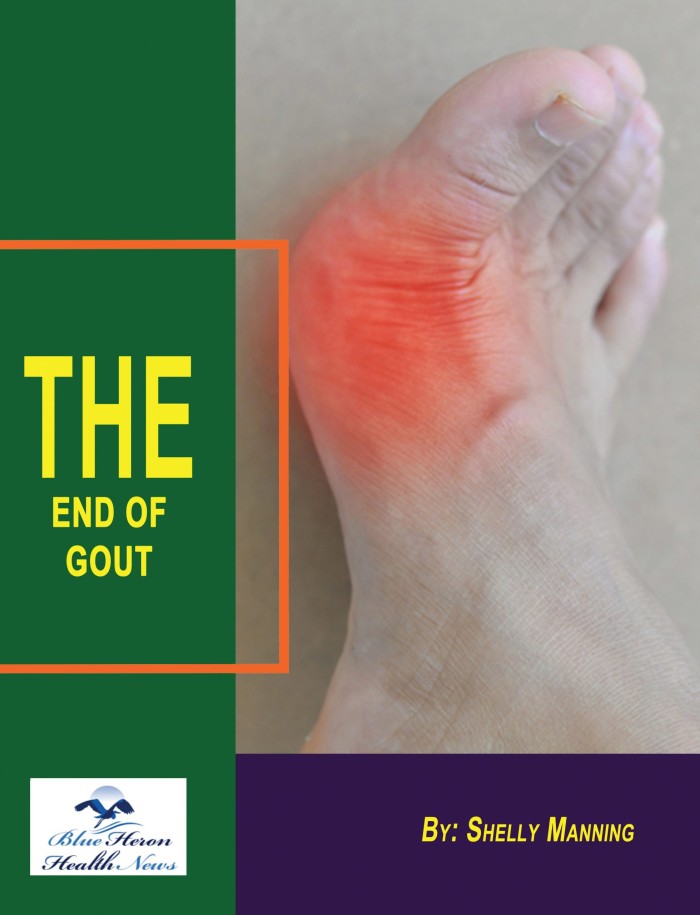
End Of GOUT Program™ By Shelly Manning The End of Gout Program is an intensive lifestyle guide and diet therapy to treat gout. It aids in minimizing and treating the uncomfortable and painful signs of gout naturally and safely. It will teach the impacted everything regarding the condition. This natural program eliminates triggers and factors that give rise to symptoms. The recommendations are honest, effective, safe, and science-based. The program treats you inside out with gout by attacking the cause. By just signing in, you get to access all the valuable information and make your life gout-free. The program has a 60-day money-back too for risk-free use. Several users have expressed their 100 percent satisfaction and results. Give it a try, and you are sure to be surprised by the fantastic results.
What is gout?
Gout is a type of inflammatory arthritis characterized by sudden, severe attacks of pain, swelling, redness, and tenderness in the joints, most often the joint at the base of the big toe. It occurs when high levels of uric acid in the blood form sharp, needle-like urate crystals in a joint or surrounding tissue, causing inflammation and intense pain.
Causes
- Uric Acid Buildup: Gout is caused by an accumulation of uric acid in the blood, a condition known as hyperuricemia. Uric acid is produced when the body breaks down purines, which are substances found naturally in the body and in certain foods (e.g., red meat, seafood, alcohol, and sugary beverages).
- Diet: Consuming foods high in purines, such as red meat, shellfish, and alcohol, can increase uric acid levels, leading to gout attacks.
- Genetics: A family history of gout increases the likelihood of developing the condition.
- Other Health Conditions: Conditions such as obesity, hypertension, kidney disease, and metabolic syndrome can contribute to higher uric acid levels and increase the risk of gout.
- Medications: Some medications, such as diuretics (water pills) and aspirin, can raise uric acid levels.
Symptoms
- Sudden Intense Joint Pain: Gout attacks usually occur suddenly, often at night, with the most common site being the big toe, though other joints such as the ankles, knees, elbows, wrists, and fingers can also be affected.
- Lingering Discomfort: After the severe pain subsides, some joint discomfort may persist for a few days to weeks.
- Inflammation and Redness: The affected joint or joints become swollen, tender, warm, and red.
- Limited Range of Motion: As gout progresses, joint movement may become increasingly restricted.
Diagnosis
- Physical Examination and History: Doctors typically diagnose gout based on symptoms, medical history, and physical examination.
- Blood Test: Measuring uric acid levels in the blood can help in diagnosing gout, although some people with high uric acid levels never develop gout, and some with gout do not have elevated levels.
- Joint Fluid Test: Extracting and examining fluid from the affected joint under a microscope can reveal the presence of urate crystals.
- X-rays and Ultrasound: These imaging tests can help visualize joint damage or urate crystals.
Treatment
- Medications:
- NSAIDs: Nonsteroidal anti-inflammatory drugs (e.g., ibuprofen) are often used to manage pain and inflammation.
- Colchicine: This anti-inflammatory drug is effective in reducing gout pain, especially if taken soon after symptoms begin.
- Corticosteroids: Steroids like prednisone can be prescribed to reduce inflammation and pain.
- Urate-lowering Therapy: Medications like allopurinol and febuxostat reduce uric acid levels and help prevent future attacks.
- Lifestyle Modifications:
- Dietary Changes: Reducing the intake of purine-rich foods, alcohol, and sugary beverages, and increasing water intake can help manage and prevent gout.
- Weight Management: Maintaining a healthy weight reduces the risk of gout attacks.
- Regular Exercise: Staying active helps manage uric acid levels and overall health.
Complications
- Tophi: Untreated gout can lead to the formation of tophi, which are large deposits of urate crystals under the skin, causing lumps that can damage joints and tissues.
- Kidney Stones: High uric acid levels can also lead to the formation of kidney stones.
- Chronic Gout: Recurrent gout attacks can lead to chronic gout, causing permanent joint damage and deformity.
Sources:
- Mayo Clinic: Provides an overview of gout, including its symptoms, causes, and treatment options (Mayo Clinic – Gout).
- Arthritis Foundation: Offers detailed information on the causes and management of gout (Arthritis Foundation – Gout).
- Cleveland Clinic: Discusses the diagnosis, treatment, and prevention of gout (Cleveland Clinic – Gout).
Gout is a manageable condition, especially with early diagnosis and treatment. Lifestyle modifications and medication can effectively control symptoms and prevent future attacks.
End Of GOUT Program™ By Shelly Manning The End of Gout Program is an intensive lifestyle guide and diet therapy to treat gout. It aids in minimizing and treating the uncomfortable and painful signs of gout naturally and safely. It will teach the impacted everything regarding the condition. This natural program eliminates triggers and factors that give rise to symptoms. The recommendations are honest, effective, safe, and science-based. The program treats you inside out with gout by attacking the cause. By just signing in, you get to access all the valuable information and make your life gout-free. The program has a 60-day money-back too for risk-free use. Several users have expressed their 100 percent satisfaction and results. Give it a try, and you are sure to be surprised by the fantastic results.